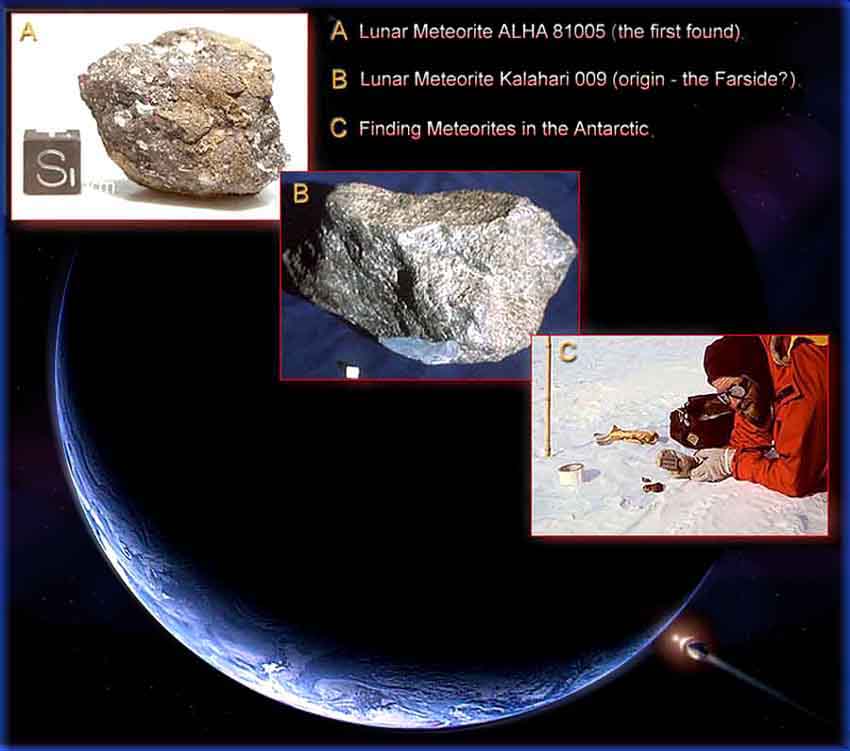November 27, 2020
The Moon On Earth
Originally published May 10, 2011

Image: John Moore (see credits below for each photo)
With recent discovery of a pre-solar mineral, called Krotite - found in a meteorite (NWA 1934) that fell in North West Africa, perhaps, an LPOD on those meteorites that have come from the Moon and landed here on Earth might be of interest. Ever since the first lunar meteorite, Allan Hills 81005 (above), was found in Antarctica in the 80s, an ever-growing number of these very rare objects today is approaching the 150 mark. Compositional analyses and ‘pairing’ (where two or more fragments belong to the same object) estimate the meteorites belong to about 50 or so separate ‘falls’ in all, and their total mass (~ 60 kg approx.,) is an additional ‘welcome’ to the ~ 383 kg of lunar samples already returned by the Apollo and Luna missions. Retrieved from just nine locations on the nearside, the Apollo/Luna samples don't, unfortunately, fully represent the diversity of lunar materials on the Moon, but meteorites, on the other hand, can come from nearly anywhere on its surface. Up to 50 percent of those so far discovered are believed to have originated from the moon’s farside (Kalahari 009 above may be from the Lomonosov-Fleming Basin), while the constituent make-up in some (ALHA 81005 above contains both exotic and unusual grains outside the normal chemical, textural and mineral range for lunar materials) are providing a more comprehensive picture of our moon’s evolution. A wonderful description and resource of lunar meteorites and research is given here by Dr Randy Korotev (above, on all fours), while the The Meteoritical Society is also well worth a look into on all meteorite finds. It’s as well to note that while all the lunar meteorites found todate come from Antarctica, Africa and Oman only, none, as yet, have been discovered in North or South America, Europe and elsewhere. Lunar meteorites must have fallen at one time on these continents, so it's only a matter of time before the next find is announced. On a final note, sales of meteor finds are a big business these days – a rare lunar meteorite could fetch you upto $25,000 (Є17,000) per gram. Wouldn’t you just love to find one?
John Moore
Image Credits:
Crescent earth: View from ESA’s Rosetta spacecraft taken by the OSIRIS instrument in 2009. (A): NASA. (B): Prof. Addi Bischoff of WWU Münster University, Germany. (C): Photo by Roberta Score of Dr. Randy L. Korotev (Dept., of Earth and Planetary Sciences, Washington University in St. Louis) collecting a meteorite (non-lunar in this case). Some meteorites discovered in the Antarctic simply lie on the snow waiting to be found.
Related Links:
Lunar Meteorites - MoonWiki page.
Yesterday's LPOD: A Non-Crater
Tomorrow's LPOD: Ballistic Rake
COMMENTS?
Register, Log in, and join in the comments.



